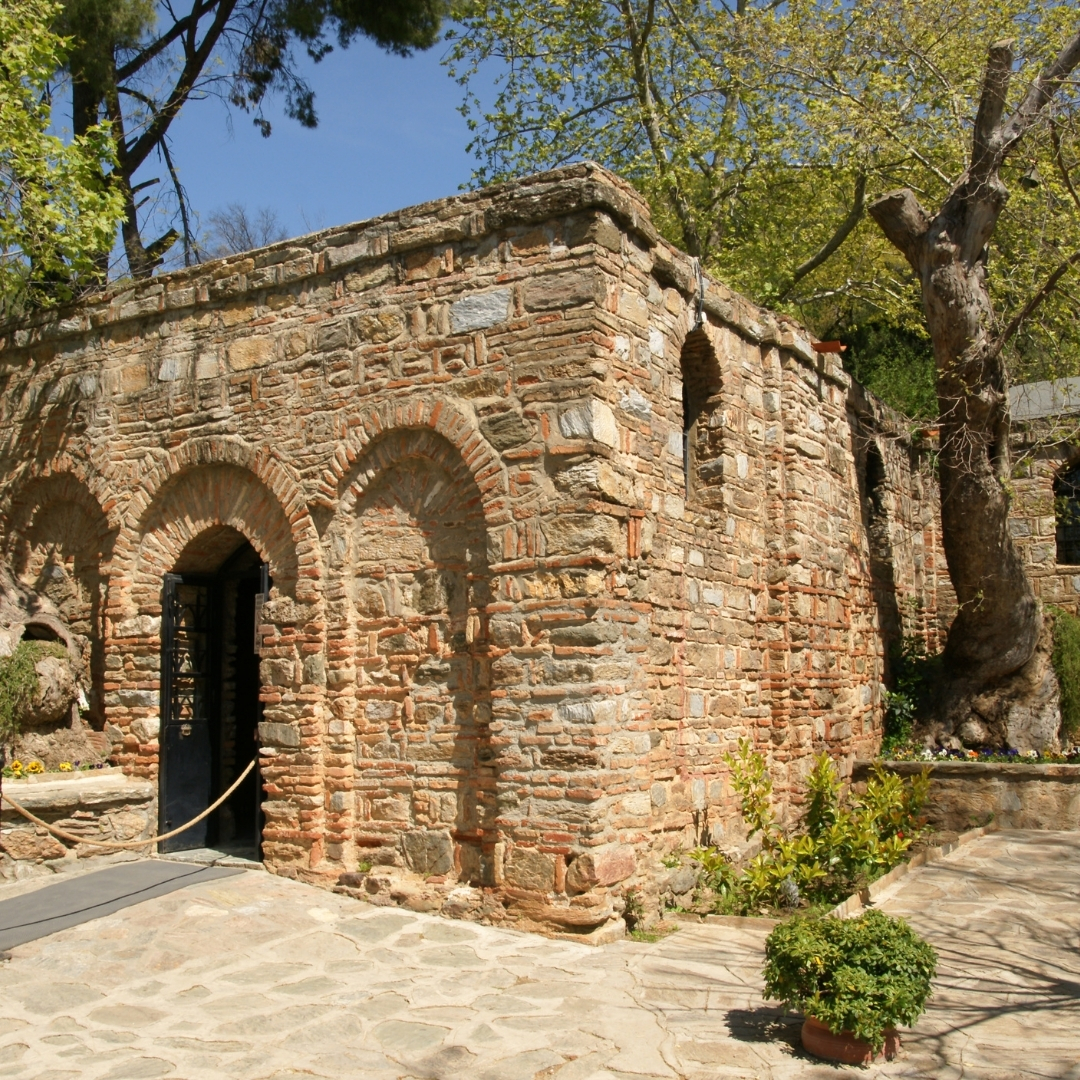
The life of St. John of Patmos, also known as the 'Theologian' or the 'Divine', and author of the Book of Revelation, is mostly known through apocryphal stories that emerged after his death. Christian tradition often identifies him with St. John the Evangelist, the author of the Fourth Gospel, and with St. John the Apostle, the son of Zebedee. Alongside his brother, St. James the Greater, John followed Christ while they were fishing by the Sea of Galilee. He became one of Jesus' closest disciples, witnessing pivotal moments such as the Transfiguration and the Crucifixion. The Gospel of John highlights a significant scene in which Jesus, on the cross, entrusts his mother to the disciple whom He loved (John 19:26-27), traditionally thought to be John.
John is believed to have been martyred in Jerusalem like his brother James, though some traditions suggest he traveled with the Virgin Mary to Ephesus, where he was later exiled to the island of Patmos. This exile marked a significant chapter in his life, during which he wrote both the Fourth Gospel and the Book of Revelation.
The period following Christ's death was turbulent for early Christians, particularly during the Jewish Revolt (66-70 AD), which culminated in the destruction of the Second Temple in Jerusalem. St. John, like many others, fled Palestine and settled in Ephesus, a city of great significance in the Roman Empire with a large Christian and Jewish population. However, St. John was distressed by the increasing compromises with paganism within the Christian community, as highlighted in the opening chapters of the Book of Revelation, which addresses the Christians of Ephesus and other churches in Asia Minor.
John's exile to Patmos is not clearly explained in the Book of Revelation. He only mentions being banished for the sake of the Word of God (Rev. 1:9). While the act of preaching was not a capital crime, Christians were often targeted for their refusal to participate in pagan practices, especially the imperial cult. It is likely that John was accused of sedition for refusing to worship the Roman emperor, Domitian, and was thus exiled to Patmos, a remote island in the Aegean Sea.
While in Patmos, St. John continued his evangelistic work, performing miracles and converting locals. One notable tradition recounts how he defeated a local magician, Kynops, who challenged him. John's miraculous powers reportedly earned him the favor of the emperor, who decided to release him after witnessing his power.
St. John spent his final years in Ephesus, where he continued to lead the Christian community and perform miracles. He is believed to have lived to a great age, dying around 100 years old. Some accounts suggest that upon his death, his body disappeared from his tomb, with other versions claiming that his sandals were found, and the earth over his grave moved as if he were still alive.
St. John's legacy as a founder of the early churches in Western Anatolia is well-established, and by the end of the second century, many churches in the region regarded him as their spiritual father. His tomb in Ephesus became a significant pilgrimage site, and his life continues to inspire countless Christian traditions and teachings.






